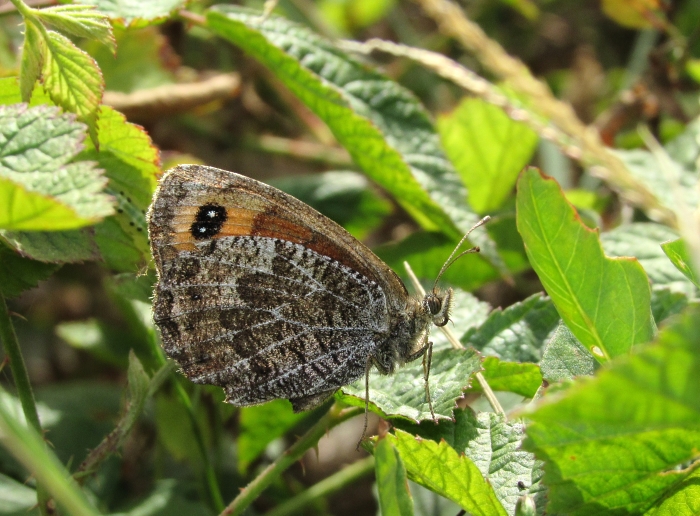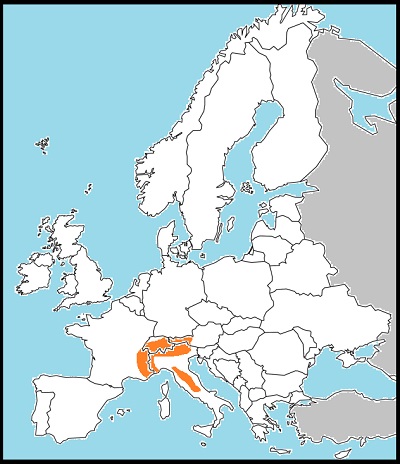
Female, Switzerland, July 2012

Female, Switzerland, October 2015

Female, Switzerland, October 2015

Male, Switzerland, July 2015

Female, Switzerland, July 2012

Male, Switzerland, July 2012

Male, Switzerland, July2015

Female, Switzerland, July 2007

Male, Switzerland, July 2007

Female, Switzerland, July 2007

Female, Switzerland, September 2007

Female, Switzerland, September 2007

Distribution
This is a common
late-summer butterfly
of grassy, alpine meadows and steep, rocky slopes. The books say it
flies from 1100m but one of my most regular sites, where landslips
bring earth and rocks down from higher up, is at about 600m. I find it
particularly commonly in eastern Valais but it is something you are
likely to come across pretty much anywhere in the Alps. There are also
a few
scattered colonies in the Apennines. In Switzerland, the species always
flies into September and often into the beginning of October in the
Rhône Valley.
Males are velvety dark above with a characteristic, tapering red band
containing two white-pupilled apical spots and usually a third spot
further down. The hindwing sports a red band containing three or four
white-pupilled spots. The female is similar but the forewing band is
much broader, making her look quite unlike anything else, and the
ground colour paler. The underside hindwing of both sexes is roughly
marbled white on grey (female) or black (male), with the veins often
highlighted in white, especially in the female. The fringes of the
female are chequered. The outer limits of the red bands, especially on
the hindwing, are often flat or concave, giving them a distinctive,
undulating appearance.
The caterpillars feed on various grasses, including matgrass and
fescues, and it is this stage that hibernates.














